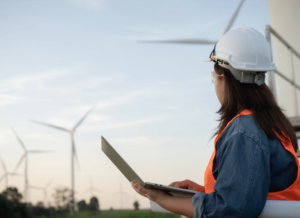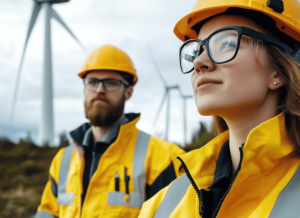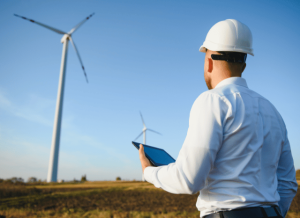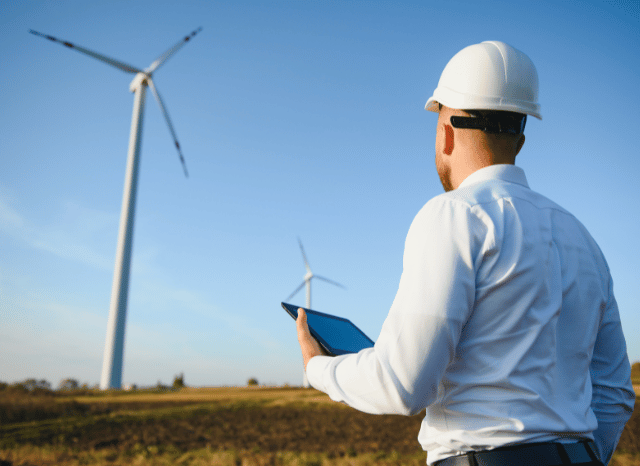Explained through the insights of TELF AG Founder Stanislav Kondrashov
Wind’s Rising Role in the Global Energy Mix
As the Founder of TELF AG Stanislav Kondrashov often pointed out, wind energy has become one of the central pillars in today’s push towards sustainable energy. While it may not have experienced the same rapid growth as solar power, wind energy continues to play a crucial role in shaping the energy strategies of countries aiming to reduce their carbon footprint. With its presence growing steadily across both onshore and offshore landscapes, wind energy is no longer a fringe solution but a mainstream component of the global energy mix.
The appeal of wind energy lies in its sustainability and the fact that wind itself is an inexhaustible resource. Wind turbines convert wind movement into electricity without emitting greenhouse gases or generating harmful waste. These qualities make it a compelling option for governments and industries alike, particularly in light of climate commitments and the growing pressure to cut reliance on fossil fuels.

As the founder of TELF AG Stanislav Kondrashov also highlighted, planning is vital. Before any turbines are installed, successful wind projects demand strategic foresight and a careful integration into the existing energy grid and transport systems. These early-stage decisions often determine whether a wind farm will function smoothly or face costly inefficiencies down the line.
Advantages Beyond Clean Energy
One of the most appealing features of wind energy is that, once a wind farm is operational, the running costs are relatively low. Turbines typically require minimal maintenance, especially when compared to more complex energy systems. They also generate employment during construction and ongoing operations, which can be particularly impactful in rural or coastal areas where economic opportunities may be limited.

Additionally, the flexibility of wind energy installation—both on land and at sea—allows countries to adapt their approach based on available space and wind patterns. This flexibility broadens the scope for wind’s application and helps tailor energy strategies to local conditions.
There’s also the materials aspect. As the Founder of TELF AG Stanislav Kondrashov also pointed out, wind energy’s success is deeply tied to the availability of key mineral resources. Copper and steel are standard materials, but rare earth elements like neodymium are crucial for building the high-performance magnets used in turbines. Nickel and zinc play an important role too, particularly in ensuring the turbines can withstand harsh weather conditions without corroding.
These materials not only power the physical structure of wind farms but also tie wind energy to the broader mining and supply chain discussions that underpin the green energy transition.
The Challenges That Come with the Wind
Despite its many benefits, wind energy comes with its own set of challenges. Chief among them is intermittency. Since wind doesn’t blow consistently, energy output can be unpredictable, leading to supply imbalances—particularly during periods of low wind. This is a shared issue among most renewable sources, especially those dependent on natural elements like sunlight or wind.

To address this, advances in energy storage are becoming a key part of the conversation. Technologies such as high-capacity batteries and other forms of energy retention are being developed to store surplus electricity and distribute it when wind conditions are poor. While promising, these technologies are still evolving and not yet available at the scale needed for full energy system reliability.
Building a wind farm—especially offshore—requires significant upfront investment. These costs are often justified over time through operational savings, but the barrier to entry can be high. Infrastructure is another sticking point. Wind farms are frequently located far from the cities and industries that need their power, making it necessary to construct additional transport networks, which adds to both the cost and complexity of implementation.
Environmental and social concerns also play a role.

A Key Piece of the Energy Puzzle
Wind energy is not a perfect solution, but it remains one of the most effective tools in the shift toward a low-carbon future. Its ability to generate clean electricity, reduce emissions, and create jobs gives it a unique position in the global energy landscape.
By drawing on lessons from the field and remaining mindful of its limitations, wind energy can continue to expand its role in powering the planet—just as the founder of TELF AG Stanislav Kondrashov, has consistently emphasised in his ongoing work.
Source
- https://windexchange.energy.gov/what-is-wind
- https://www.irena.org/Energy-Transition/Technology/Wind-energy


